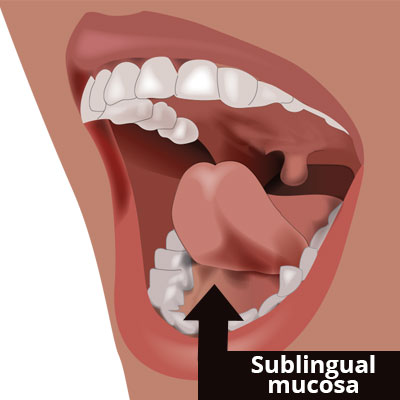Allergy drops work like allergy shots by delivering a slowly increasing dose of FDA-approved antigens that can help you gradually retrain your immune system to tolerate things that cause allergic reactions.
The difference? Allergy drops are placed under the tongue, where special (dendritic) cells work to build tolerance. Research shows these cells are an effective friendlier, and safer route for building long-term tolerance, making it ideal for patients who aren’t candidates for shots.
Talking allergy drops multiple times per day is shown to result in better results.1 In clinical trials, researchers saw additional immunological changes as treatment progressed2, so while you may feel better in the short-term, you’ll need to stay with it at on the average of 3-5 years to get lasting results. Your provider can recommend when it’s time to stop based on your results and possible testing.
Why Under-the-Tongue Drops?
Sublingual immunotherapy involves taking small doses of allergens under the tongue to boost tolerance to specific allergens over time. By exposing the immune system to tiny amounts of the allergen through specialized dendritic cells under the tongue, it’s possible to retrain it to no longer react and reduce or eliminate allergic reactions.
Studies have shown that allergens delivered under the tongue stay present for at least 48 hours. This gives dendritic cells the opportunity to interact locally with naive T cells that help suppress allergic reactions after multiple exposures. Multiple dosing per day give constant, uninterrupted exposure during treatment.

- Bordignon, V. Burastero, S. (2006). Multiple daily administrations of low-dose sublingual immunotherapy in allergic rhinoconjunctivitis. Annals of Allergy, Asthma & Immunology, 97, 158-163.
- Durham, S. (2008). Sublingual immunotherapy: what have we learnt from the "big trials"? Current Opinion in Allergy and Clinical Immunology. December 2008 - Volume 8 - Issue 6 - p 577–584. doi: 10.1097/ACI.0b013e3283196764
Request an Appointment
